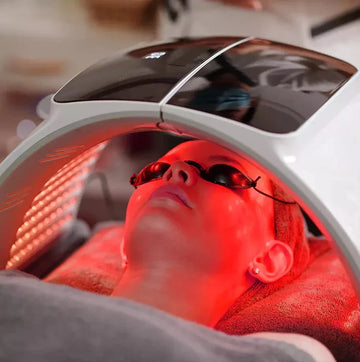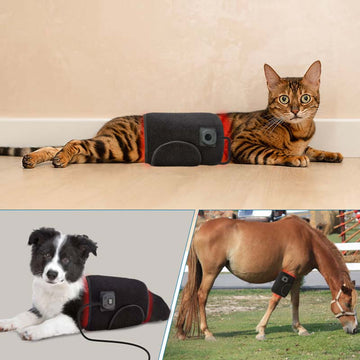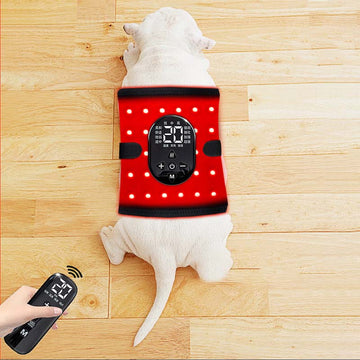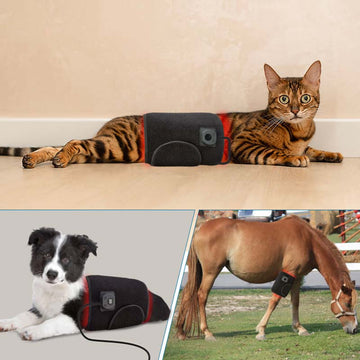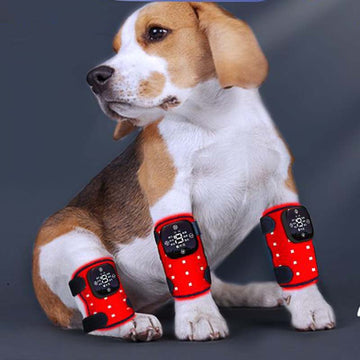The red LED therapy market has exploded in recent years, offering everything from pocket-sized portable units to professional-grade full-body systems. With prices ranging from under $100 to over $10,000, and devices claiming to treat everything from wrinkles to chronic pain, how do you choose?
The truth is, there's no single "best" red LED therapy device—only the best device for your specific needs, goals, and budget. A professional athlete training for competition has different requirements than someone seeking facial rejuvenation, and a physical therapy clinic needs different equipment than a home user.
This comprehensive guide breaks down every major type of red LED therapy device, comparing features, benefits, limitations, and ideal use cases. By the end, you'll know exactly which category fits your situation, making your purchasing decision clear and confident.
Understanding Device Categories: Overview
Before diving deep into each type, here's a quick overview of the main categories:
| Device Type | Size | Price Range | Best For | Portability |
|---|---|---|---|---|
| Full-Body Panels | Large (24"×48"+) | $800-$5,000+ | Comprehensive treatment, serious users | Stationary |
| Targeted Panels | Medium (12"×24") | $300-$1,500 | Specific areas, home use | Semi-portable |
| Portable Devices | Small (handheld) | $100-$600 | Travel, spot treatment | Highly portable |
| Face Masks | Face-sized | $150-$500 | Facial skincare only | Portable |
| Wearable Wraps | Flexible wraps | $200-$800 | Joints, specific body parts | Portable |
| Full-Body Beds | Room-sized | $10,000-$50,000+ | Professional clinics, spas | Stationary |
| Hair Growth Caps | Cap/helmet | $200-$1,000 | Hair loss treatment only | Semi-portable |
Now let's explore each category in detail.
1. Full-Body LED Panels: The Comprehensive Solution
What They Are
Full-body LED panels are large, flat panels (typically 24"×48" or larger) containing hundreds to thousands of LED bulbs. They're designed to deliver red and near-infrared light therapy to large areas of the body simultaneously.
Key Features
Size and Coverage:
- Standard sizes: 24"×48", 36"×48", or modular systems
- Treat entire body sections at once
- Can be positioned vertically or horizontally
- Some models link together for even larger coverage
Power Output:
- High power density: typically 80-200+ mW/cm²
- Professional-grade light output
- Effective from 12-24 inches away
- Shorter treatment times due to high power
Wavelength Options:
- Dual wavelength: 660nm (red) + 850nm (near-infrared) most common
- Some offer adjustable wavelengths
- Combination provides surface and deep tissue treatment
Additional Features:
- Built-in timers
- Multiple intensity settings
- Pulse mode options
- Remote controls
- Digital displays
- EMF shielding (in quality models)
Advantages
✅ Most Efficient: Treat multiple areas simultaneously
✅ High Power: Stronger output means shorter sessions
✅ Versatile: Suitable for any body area or treatment goal
✅ Best Value Long-Term: Lowest cost per treatment session over time
✅ Professional Quality: Clinical-grade results at home
✅ Multi-User Friendly: Whole family can benefit
Disadvantages
❌ High Initial Cost: $800-$5,000+ investment
❌ Space Requirements: Need dedicated area for setup
❌ Not Portable: Difficult to move or travel with
❌ Setup Required: Must mount or position properly
❌ Power Consumption: Higher electricity usage
Ideal For
👤 Serious Health Enthusiasts: Making long-term commitment to red LED therapy
👤 Athletes: Need full-body recovery treatment
👤 Chronic Pain Sufferers: Multiple treatment areas
👤 Families: Multiple users sharing device
👤 Anti-Aging Focus: Full-body skin benefits
👤 Home Clinic Setup: Practitioners treating clients
What to Look For
Essential Specifications:
- Minimum 100 mW/cm² power density at 6 inches
- True 660nm and 850nm wavelengths (verify with specs)
- At least 150-200 LEDs for adequate coverage
- Low EMF emission certification
- 2-3 year warranty minimum
Quality Indicators:
- Third-party testing verification
- Clear technical specifications provided
- Responsive customer support
- Positive long-term user reviews
- Medical-grade components
Red Flags:
- No power density specifications
- Vague wavelength claims ("red light" without nm)
- No warranty or very short warranty
- Suspiciously low prices for size
- No independent testing
Price Expectations
Budget Range ($800-$1,500):
- Smaller panels (24"×24" or similar)
- Basic features
- Good for starting out
- May have lower power output
Mid-Range ($1,500-$3,000):
- Standard full-body size (24"×48")
- Quality components
- Advanced features (timers, pulse modes)
- Better warranties
- Sweet spot for most home users
Premium Range ($3,000-$5,000+):
- Larger panels or multi-panel systems
- Highest power output
- Advanced customization
- Extended warranties
- Professional-grade quality
2. Targeted LED Panels: The Balanced Choice
What They Are
Targeted panels are medium-sized LED devices (typically 12"×12" to 18"×24") designed to treat specific body areas. They offer a balance between power, portability, and price.
Key Features
Size and Coverage:
- Compact enough to be semi-portable
- Adequate coverage for targeted areas
- Easy to position for face, back, joints
- Some desktop or tabletop models available
Power Output:
- Moderate to high: 50-100 mW/cm²
- Effective for localized treatment
- Reasonable treatment times (10-20 minutes)
Design Options:
- Freestanding with adjustable stands
- Wall-mountable versions
- Desktop models
- Flexible positioning systems
Advantages
✅ Affordable: $300-$1,500 range accessible to more buyers
✅ Space-Efficient: Fits in smaller living spaces
✅ Focused Treatment: Effective for specific problem areas
✅ Semi-Portable: Can move between rooms
✅ Lower Power Usage: More economical electricity consumption
✅ Good Entry Point: Test red LED therapy without huge investment
Disadvantages
❌ Limited Coverage: Treat one area at a time
❌ Longer Total Time: Must treat areas sequentially
❌ Lower Power: May require longer sessions than large panels
❌ Still Space-Needed: Not truly portable like handheld devices
Ideal For
👤 First-Time Users: Testing red LED therapy effectiveness
👤 Specific Concerns: Focused on particular issue (face, knee, etc.)
👤 Budget-Conscious: Want quality without premium price
👤 Small Spaces: Apartment dwellers, limited room
👤 Individual Users: Single person using device
👤 Targeted Pain: Localized chronic pain management
What to Look For
- Minimum 50 mW/cm² power density
- 660nm + 850nm dual wavelength
- 50+ LEDs for adequate coverage
- Adjustable positioning options
- Timer function
- At least 1-2 year warranty
Price Expectations
Budget ($300-$600):
- Smaller size (12"×12")
- Basic functionality
- Good for facial or small area treatment
Mid-Range ($600-$1,000):
- Larger targeted panels (18"×18")
- Better build quality
- Advanced features
- Best value for targeted treatment
Premium ($1,000-$1,500):
- Approaching small full-body panel territory
- High power output
- Professional features
3. Portable Handheld Devices: Convenience on the Go
What They Are
Portable handheld red LED therapy devices are compact, lightweight units you can hold in your hand and apply directly to treatment areas. They range from pen-sized spot treatment tools to larger wand-style devices.
Key Features
Size and Portability:
- Pocket to handheld size
- Battery-powered or USB rechargeable
- Easy to pack for travel
- Use anywhere, anytime
Power Output:
- Lower power: typically 20-50 mW/cm²
- Requires closer proximity to skin
- Longer treatment times needed
- Limited coverage area per session
Design Variations:
- Wand-style: Larger head for broader coverage
- Spot treatment pens: Precise targeting
- Flexible heads: Contour to body areas
- Cordless: Battery operation for true portability
Advantages
✅ Highly Portable: Take anywhere—travel, work, gym
✅ Affordable Entry: $100-$400 price range
✅ No Setup Required: Ready to use immediately
✅ Precise Targeting: Excellent for small areas
✅ User-Friendly: Simple, intuitive operation
✅ No Space Needed: Store in drawer or bag
✅ Discreet: Use privately anywhere
Disadvantages
❌ Limited Coverage: Very small treatment area
❌ Time-Intensive: Must manually move over entire area
❌ Lower Power: Less effective than larger devices
❌ Arm Fatigue: Must hold for entire session
❌ Battery Dependence: Need charging/batteries
❌ Not Comprehensive: Impractical for full-body treatment
Ideal For
👤 Travelers: Maintain routine on the go
👤 Spot Treatment: Specific small areas (scar, joint, etc.)
👤 Budget Limitations: Want to try red LED therapy affordably
👤 Supplemental Use: Addition to larger device
👤 Office Workers: Quick sessions during work
👤 Athletes: Target specific injury or recovery area
👤 Beginners: Testing red LED therapy before larger investment
What to Look For
- At least 30 mW/cm² power output
- 660nm and/or 850nm wavelengths
- Rechargeable battery (vs. disposable)
- Ergonomic design for comfortable holding
- Auto-shutoff timer
- Durable construction
- Minimum 1-year warranty
Price Expectations
Budget ($100-$200):
- Basic spot treatment devices
- Limited features
- Adequate for testing concept
Mid-Range ($200-$400):
- Larger treatment head
- Better power output
- Rechargeable
- More features
- Best for regular portable use
Premium ($400-$600):
- Advanced features
- Medical-grade components
- Longer battery life
- Professional quality
Important Note
Due to their limited power and coverage, handheld devices work best as:
- Supplemental to larger device
- Targeted spot treatment
- Travel solution to maintain routine
- Entry point before upgrading
They're generally not adequate as a sole device for comprehensive red LED therapy benefits.
4. LED Face Masks: Skincare Specialists
What They Are
LED face masks are face-shaped devices that cover your entire face, delivering red (and sometimes additional wavelength) light therapy specifically optimized for facial skin treatment.
Key Features
Design:
- Conforms to face contours
- Hands-free operation
- Built-in eye protection
- Adjustable straps for secure fit
Wavelength Options:
- Red light (660nm) for anti-aging
- Some include blue light (for acne)
- Some include yellow/amber (for redness)
- Near-infrared less common (doesn't penetrate as deeply for skin needs)
Power Output:
- Moderate: 30-60 mW/cm²
- Optimized for facial skin depth
- Even distribution across face
- Typical session: 10-20 minutes
Technology:
- LED arrays positioned for even coverage
- Some include timers and auto-shutoff
- Wireless versions available
- App connectivity in premium models
Advantages
✅ Hands-Free: Multitask during treatment
✅ Even Coverage: Entire face treated uniformly
✅ Convenient: Simple daily use
✅ Optimized for Face: Designed specifically for facial skin
✅ Comfortable: Lightweight, non-invasive
✅ Consistent Results: Same positioning every session
Disadvantages
❌ Face Only: Cannot treat other body areas
❌ One Size Fits Most: May not fit all face shapes perfectly
❌ Limited Power: Not as strong as panels
❌ Single Purpose: Very specialized device
❌ Eye Protection Critical: Must ensure proper eye shielding
Ideal For
👤 Skincare Enthusiasts: Primarily focused on facial anti-aging
👤 Busy Professionals: Want hands-free treatment while multitasking
👤 Skincare Routine Integration: Adding to existing regimen
👤 Acne Sufferers: When masks include blue light
👤 Convenience Seekers: Prefer simple, specialized devices
What to Look For
Essential Features:
- FDA-cleared (if available)
- Minimum 30 mW/cm² for red light
- True 660nm wavelength
- Adequate LED coverage (100+ LEDs)
- Eye protection built-in
- Timer function
- At least 1-year warranty
Quality Indicators:
- Medical-grade materials
- Clinical study support
- Dermatologist endorsements
- Positive long-term reviews
- Clear specifications
Red Flags:
- No wavelength specifications
- Extremely low price ($50-$100 range often inadequate)
- No eye protection
- Poor reviews about durability
Price Expectations
Budget ($150-$250):
- Basic functionality
- Limited features
- Adequate for starting
- May lack durability
Mid-Range ($250-$400):
- Quality construction
- Multiple light modes
- Better coverage
- Good warranties
- Sweet spot for most users
Premium ($400-$500+):
- Professional-grade
- Advanced features
- App connectivity
- Extended warranties
- Clinical study backing
Effectiveness Comparison
Face masks are highly effective for facial treatment when:
- Used consistently (4-5 times weekly)
- Adequate power output
- Proper wavelengths
- Quality construction
They're less effective than:
- Larger panels that can cover face at higher power
- Devices that include near-infrared for deeper penetration
Best Practice: Face masks excel for dedicated facial skincare but should be complemented with panel or handheld for body treatment if needed.
5. Wearable LED Wraps: Targeted Flexibility
What They Are
Wearable LED wraps are flexible devices containing LED arrays that wrap around specific body parts like knees, elbows, shoulders, or back. They secure with straps or velcro for hands-free treatment.
Key Features
Design:
- Flexible fabric or neoprene construction
- Embedded LED arrays
- Adjustable straps for various sizes
- Contours to body shape
Coverage Areas:
- Knee wraps
- Elbow wraps
- Shoulder wraps
- Lower back belts
- Neck wraps
- Joint-specific designs
Power:
- Moderate: 30-60 mW/cm²
- Battery-powered or plug-in
- Even distribution around targeted area
Advantages
✅ Hands-Free: Secure and continue activities
✅ 360° Coverage: Wraps around entire joint/area
✅ Comfortable: Flexible, conforms to body
✅ Targeted Design: Optimized for specific body parts
✅ Mobile: Move around during treatment
✅ Discreet: Can wear under loose clothing
Disadvantages
❌ Limited to Design: Only treat specific body part it's designed for
❌ Moderate Power: Not as strong as panels
❌ Durability Concerns: Flexible materials may wear
❌ One Size May Not Fit All: Sizing limitations
❌ Heat Potential: Wrapping may trap some heat
Ideal For
👤 Joint Pain Sufferers: Arthritis, sports injuries
👤 Athletes: Targeted recovery for specific areas
👤 Active Users: Want treatment while moving
👤 Convenience Seekers: Prefer hands-free operation
👤 Specific Problem Areas: Chronic knee, elbow, shoulder issues
What to Look For
- Adequate LED count for coverage area
- 660nm + 850nm wavelengths
- Adjustable sizing
- Quality materials (medical-grade)
- Timer function
- Rechargeable battery
- At least 1-year warranty
Price Expectations
Budget ($200-$400):
- Basic wrap designs
- Limited features
- Adequate for testing
Mid-Range ($400-$600):
- Better LED quality
- Multiple settings
- Improved durability
- Best for regular use
Premium ($600-$800):
- Professional-grade
- Advanced features
- Extended warranties
6. Full-Body LED Beds: Professional Solutions
What They Are
Full-body LED beds are large, room-sized systems with LED panels above and below, surrounding the entire body for comprehensive treatment. These are primarily found in clinics, spas, and wellness centers.
Key Features
Design:
- Bed or capsule format
- Upper and lower LED arrays
- Full-body simultaneous treatment
- Climate control options
- Entertainment systems (music, etc.)
Power:
- Very high: 100-300+ mW/cm²
- Comprehensive coverage
- Short treatment times (10-20 minutes)
- Professional-grade intensity
Technology:
- Programmable protocols
- Multiple wavelength options
- Pulse modes
- Session tracking
- Client management systems
Advantages
✅ Most Comprehensive: Entire body treated simultaneously
✅ Highest Power: Professional-grade intensity
✅ Luxurious Experience: Spa-quality treatment
✅ Time-Efficient: Complete session in 10-20 minutes
✅ Professional Results: Clinical-grade outcomes
Disadvantages
❌ Extremely Expensive: $10,000-$50,000+
❌ Space Requirements: Dedicated room needed
❌ Not for Home Use: Impractical for individuals
❌ Maintenance: Requires upkeep
❌ Power Consumption: High electricity usage
Ideal For
👤 Wellness Centers: Adding service offering
👤 Physical Therapy Clinics: Patient treatment
👤 Spas: Premium wellness service
👤 Medical Practices: Integrated treatment
👤 High-End Fitness Facilities: Recovery offering
Business Considerations
ROI Potential:
- Charge $30-$100 per session
- Break-even typically 6-18 months
- Attractive client service addition
- Differentiator from competitors
Requirements:
- Dedicated room space (10'×10' minimum)
- Electrical capacity (220V often required)
- Insurance coverage
- Staff training
- Maintenance budget
7. Hair Growth Caps and Helmets: Specialized Treatment
What They Are
LED caps and helmets are specialized devices designed specifically for treating hair loss and promoting hair regrowth on the scalp.
Key Features
Design:
- Cap or helmet covering entire scalp
- LED arrays positioned for even scalp coverage
- Hands-free operation
- Comfortable wear for extended sessions
Wavelength:
- Typically 650-660nm red light
- Optimized for hair follicle stimulation
- Some include 850nm near-infrared
Power:
- Moderate: 30-50 mW/cm²
- Requires longer sessions (20-30 minutes)
- Consistent, even distribution
Advantages
✅ Specialized: Designed specifically for hair loss
✅ Hands-Free: Multitask during treatment
✅ Even Coverage: Entire scalp treated uniformly
✅ FDA-Cleared: Many devices have clearance
✅ Clinically Proven: Strong research support
Disadvantages
❌ Single Purpose: Only treats hair loss
❌ Long Timeline: Results take 4-6+ months
❌ Frequency Demand: Requires consistent use (3-4× weekly minimum)
❌ Not for Advanced Loss: Less effective on completely bald areas
Ideal For
👤 Early Hair Loss: Beginning stages most responsive
👤 Pattern Baldness: Male and female pattern hair loss
👤 Post-Transplant: Supporting hair growth after procedures
👤 Prevention: Maintaining existing hair health
What to Look For
- FDA clearance for hair growth
- Clinical study support
- Minimum 80-100 LEDs
- 650-660nm wavelength
- Timer function
- Comfortable fit
- 1-2 year warranty
Price Expectations
Budget ($200-$400):
- Basic cap designs
- Adequate LED count
- Entry-level option
Mid-Range ($400-$700):
- Better coverage
- More LEDs
- Improved comfort
- Recommended for serious use
Premium ($700-$1,000+):
- Professional-grade
- Maximum LED count
- Advanced features
- Clinical backing
Effectiveness Expectations
Realistic Outcomes:
- 3-4 months: Initial changes (slowed loss)
- 4-6 months: Noticeable new growth
- 6-12 months: Optimal results
- Ongoing: Maintenance required
Best Combined With:
- Topical treatments (minoxidil)
- Nutritional support
- Scalp health practices
- Professional guidance
Comparison Table: Device Types at a Glance
$$-$$$$-$$-$-$$-$$-$$
| Feature | Full-Body Panel | Targeted Panel | Portable | Face Mask | Wearable Wrap | LED Bed | Hair Cap |
|---|---|---|---|---|---|---|---|
| Coverage | Excellent | Good | Limited | Face Only | Specific Area | Excellent | Scalp Only |
| Power | Very High | High | Low-Moderate | Moderate | Moderate | Very High | Moderate |
| Portability | Poor | Fair | Excellent | Good | Good | None | Good |
| Price | $$$$$+ | ||||||
| Versatility | Excellent | Good | Good | Poor | Poor | Excellent | Poor |
| Setup | Complex | Moderate | None | Simple | Simple | Complex | Simple |
| Best For | Comprehensive | Focused Areas | Travel/Spot | Face/Skin | Joints/Pain | Professional | Hair Loss |
| Time Efficiency | Excellent | Good | Poor | Good | Good | Excellent | Moderate |
Price Key:
- $ = Under $200
- $$ = $200-$500
- $$$ = $500-$1,000
- $$$$ = $1,000-$3,000
- $$$$$ = $3,000+
Decision Framework: Choosing Your Device Type
Use this framework to narrow down the best device type for your needs:
Step 1: Define Your Primary Goal
Skin/Anti-Aging Focus:
- Best: Face mask for face, targeted panel for body
- Alternative: Full-body panel for comprehensive
Pain Management:
- Best: Targeted panel or wearable wrap
- Alternative: Full-body panel if multiple areas
Athletic Recovery:
- Best: Full-body panel
- Alternative: Targeted panel + portable for travel
Hair Loss:
- Best: Specialized hair cap
- Alternative: None—this requires specialized device
General Wellness:
- Best: Full-body or targeted panel
- Alternative: Combination of devices
Step 2: Consider Your Budget
Under $300:
- Quality portable device
- Entry-level targeted panel
- Budget face mask
$300-$1,000:
- Good targeted panel
- Quality face mask
- Hair growth cap
- Sweet spot for most users
$1,000-$3,000:
- Quality full-body panel
- Premium targeted panel + accessories
- Multiple specialized devices
$3,000+:
- Premium full-body panel
- Multiple device setup
- Professional-grade equipment
Step 3: Assess Your Space
Limited Space (apartment, small room):
- Portable device
- Face mask
- Wearable wrap
- Compact targeted panel
Moderate Space (bedroom, home office):
- Targeted panel (wall-mount or stand)
- Combination of smaller devices
Ample Space (dedicated room):
- Full-body panel
- Multiple panels
- Professional setup
Step 4: Evaluate Lifestyle Factors
Travel Frequently:
- Priority: Portable device
- Secondary: Small targeted panel (if space allows)
Always at Home:
- Best: Full-body or targeted panel
- Most cost-effective long-term
Busy Schedule:
- Hands-free options: Face mask, wearable wrap
- High-power devices: Shorter sessions
Relaxed Schedule:
- Any device type works
- Can accommodate longer sessions with lower-power devices
Step 5: Think Long-Term
Starting Out:
- Begin with lower investment
- Upgrade later if beneficial
- Portable or targeted panel recommended
Committed Long-Term:
- Invest in quality from start
- Full-body panel often best value over time
- Consider comprehensive setup
Testing Effectiveness:
- Start with affordable option
- Mid-range targeted panel or quality portable
- Upgrade based on results
Common Device Selection Mistakes
Mistake #1: Buying Too Small
The Problem: Purchasing underpowered or tiny devices that can't deliver adequate treatment.
The Solution: Ensure minimum power specifications (30+ mW/cm²) and adequate LED count for coverage area. Bigger isn't always better, but too small is definitely worse.
Mistake #2: Overbuying Initially
The Problem: Investing $3,000+ in full-body panel before knowing if red LED therapy works for you.
The Solution: Start with mid-range investment ($500-$1,000) to test effectiveness, then upgrade if desired.
Mistake #3: Choosing Based on Price Alone
The Problem: Selecting cheapest option without verifying specifications.
The Solution: Compare power density, wavelengths, LED count, and warranties—not just price. Sometimes paying slightly more makes huge difference.
Mistake #4: Ignoring Specifications
The Problem: Buying device that looks good but lacks proper wavelengths or power.
The Solution: Always verify:
- Exact wavelengths (660nm and/or 850nm)
- Power density (mW/cm²)
- LED count
- Coverage area
- Third-party testing
Mistake #5: Not Considering Expansion
The Problem: Buying single-purpose device when needs may expand.
The Solution: Consider versatility. Targeted panel can treat face AND body. Face mask cannot treat body.
My Recommendations by User Profile
The Beginner
Profile: First time trying red LED therapy, want to test before major investment.
Recommended:
- Primary: Mid-range targeted panel ($600-$1,000)
- Alternative: Quality portable device ($200-$400)
Reasoning: Targeted panel offers versatility, adequate power, and reasonable investment. Can treat face, joints, back—testing effectiveness across applications.
The Skincare Enthusiast
Profile: Primarily focused on facial anti-aging and skin health.
Recommended:
- Primary: Quality face mask ($250-$400)
- Upgrade: Add targeted panel for neck/chest
Reasoning: Face mask optimized for facial treatment, hands-free convenience. Panel addition covers areas mask misses.
The Athlete
Profile: Focused on recovery, performance, injury prevention.
Recommended:
- Primary: Full-body panel ($1,500-$3,000)
- Secondary: Portable device for travel/gym
Reasoning: Full-body panel handles comprehensive recovery efficiently. Portable maintains routine when traveling for competitions.
The Chronic Pain Sufferer
Profile: Managing arthritis, fibromyalgia, or chronic pain condition.
Recommended:
- Primary: Full-body panel OR targeted panel
- Addition: Wearable wrap for specific problem joints
Reasoning: Need adequate power and coverage for pain relief. Wearable wrap allows hands-free treatment of worst areas while doing daily activities.
The Hair Loss Combatant
Profile: Addressing thinning hair or pattern baldness.
Recommended:
- Primary: FDA-cleared hair cap ($400-$700)
- No substitutes: Specialized device required
Reasoning: Hair loss requires specialized device with specific wavelengths and positioning. Regular panels cannot adequately treat scalp.
The Wellness Optimizer
Profile: Comprehensive health focus, multiple goals, committed long-term.
Recommended:
- Primary: Full-body panel ($2,000-$4,000)
- Additions: Face mask and/or portable as budget allows
Reasoning: Full-body handles most needs. Speciality devices optimize specific areas. Comprehensive setup for comprehensive goals.
The Budget-Conscious
Profile: Want benefits but limited budget.
Recommended:
- Primary: Entry-level targeted panel ($400-$600) OR quality portable ($250-$400)
- Alternative: Start with portable, save for panel
Reasoning: Get started with proven effectiveness at accessible price point. Upgrade later when able and if benefits justify.
Conclusion: Making Your Decision
Choosing the right red LED therapy device comes down to matching device capabilities with your specific needs, goals, and circumstances. There's no universally "best" device—only the best device for you.
Key Decision Factors:
🎯 Primary Treatment Goal: What's your main focus?
🎯 Budget Reality: What can you invest now vs. later?
🎯 Space Availability: Where will it live?
🎯 Lifestyle Compatibility: How will it fit your routine?
🎯 Long-Term Vision: Is this experimental or committed?
General Guidance:
For most home users seeking comprehensive benefits, a mid-range full-body or targeted panel ($1,000-$2,000) offers the best balance of power, versatility, and value.
For specific applications (face only, hair loss), specialized devices often outperform general-purpose options.
For beginners or budget limitations, quality targeted panels ($500-$800) provide adequate power and versatility to test effectiveness before larger investment.
Ready for specific product recommendations? Our next guide reviews the best red LED therapy devices of 2025, with detailed recommendations for each category and price point.
Still have questions? Check our comprehensive FAQ guide for answers to common concerns about red LED therapy devices.
Quick Reference: Which Device Type for Your Goal
| Your Goal | Recommended Device Type | Budget Range |
|---|---|---|
| Facial Anti-Aging | LED Face Mask | $250-$500 |
| Full-Body Skin Care | Full-Body Panel | $1,500-$3,000 |
| Chronic Pain (Multiple Areas) | Full-Body or Large Targeted Panel | $800-$2,500 |
| Single Joint Pain | Wearable Wrap or Targeted Panel | $400-$1,000 |
| Athletic Recovery | Full-Body Panel | $1,500-$3,000 |
| Hair Loss | Specialized Hair Cap | $400-$800 |
| General Wellness | Targeted or Full |
